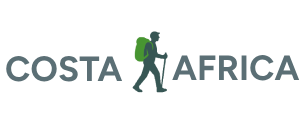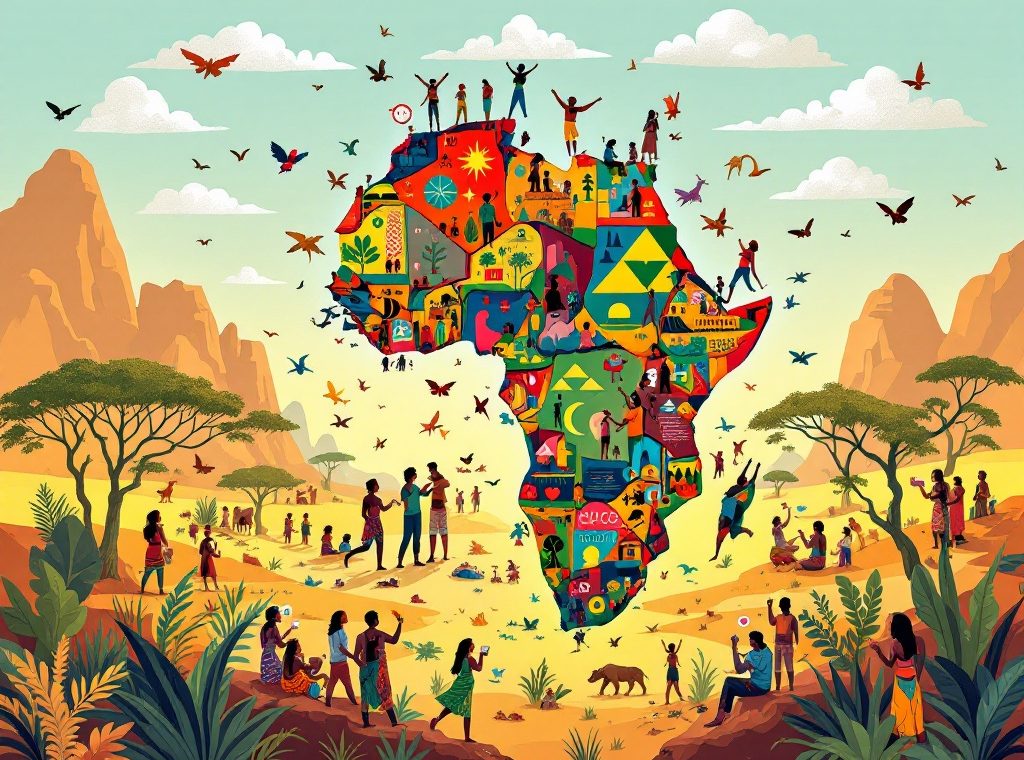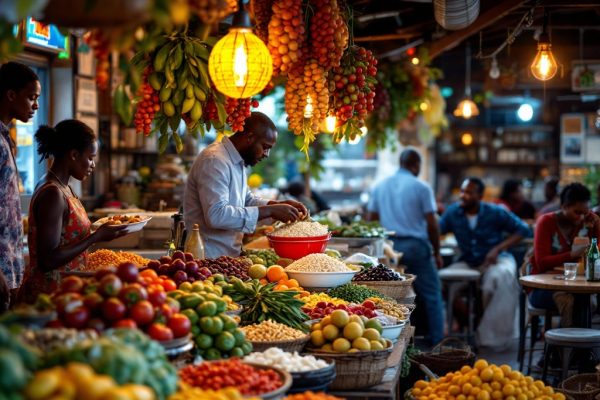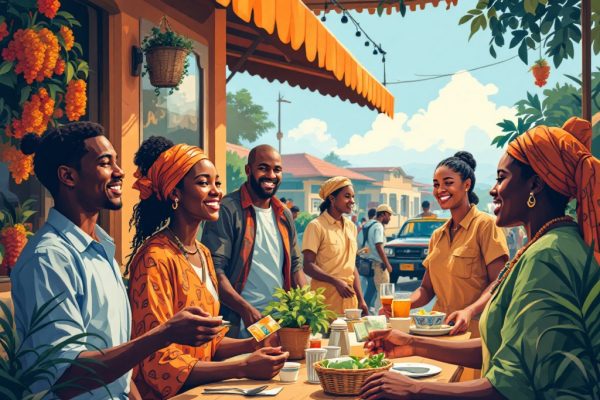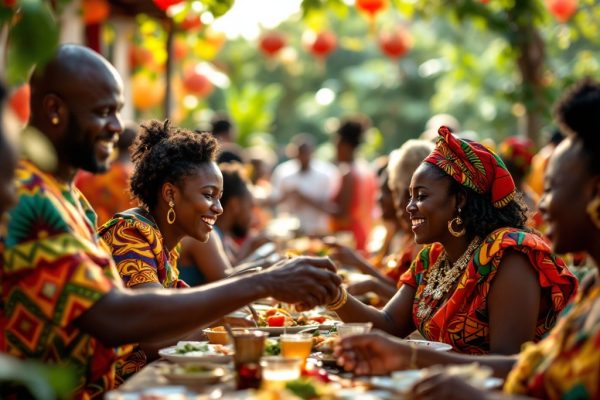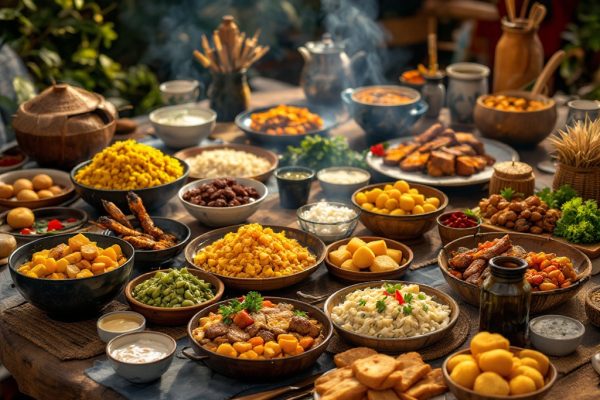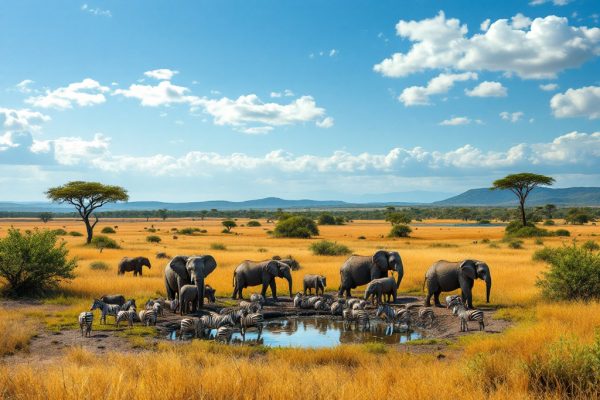Languages Spoken in Africa
Discover the vibrant tapestry of Africa’s languages! Home to a third of the world’s languages—between 1,250 and 2,100—Africa boasts incredible linguistic diversity. From the click consonants of the Khoisan languages to the widespread use of Arabic, this article explores the major language families, their geographical distribution, and the crucial roles they play in trade, culture, and national identity. Delve into the fascinating world of African linguistics and explore the efforts underway to preserve these invaluable languages for future generations. Read on to uncover the rich linguistic landscape of Africa.
Important information
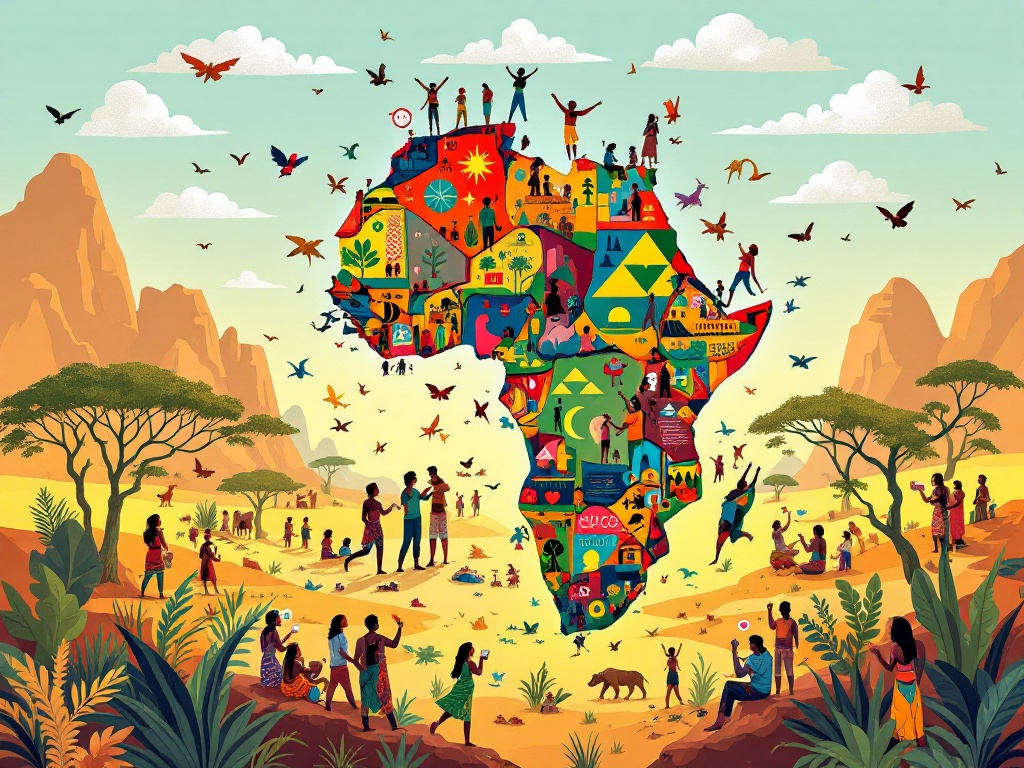
- Africa is home to a remarkable linguistic diversity, with between 1,250 and 2,100 languages spoken, representing roughly one-third of the world’s total languages.
- Four main language families dominate: Afro-Asiatic, Nilo-Saharan, Niger-Congo (the largest), and Khoisan (known for click consonants).
- Key widely spoken languages include Arabic (North Africa), Swahili (East Africa), Hausa, Yoruba, and Igbo (Nigeria), and Zulu and Xhosa (South Africa).
- Many African languages are endangered due to globalization and the increasing dominance of colonial languages (English, French, and Portuguese).
- Preservation efforts focus on documentation, education, community engagement, and the vital role of oral traditions.
Introduction to Languages Spoken in Africa
Africa is incredibly linguistically diverse, home to between 1,250 and 2,100 languages—a full third of the world’s total. This remarkable array represents numerous distinct language families.
Linguistic Diversity and Ethnolinguistic Groups
Africa boasts an astounding linguistic tapestry, with over 2,000 languages spoken across its diverse ethnic groups, enriching its vibrant cultural landscape. While this multitude of tongues contributes to Africa’s rich identity, roughly 100 common languages facilitate trade and intergroup understanding. This linguistic diversity shapes social interactions, influences educational systems, and even impacts governance.
Geographical Distribution of African Languages
African languages are spoken across a vast region, from North Africa and the Horn of Africa to Western Asia and the Sahel. This broad distribution reflects the diverse migrations and settlements of various groups across the continent and beyond.
Afro-Asiatic languages prevail in North Africa, the Horn of Africa, and parts of Western Asia.
Nilo-Saharan languages are concentrated in East and Central Africa.
Niger-Congo languages, the continent’s largest language family, dominate Sub-Saharan Africa.
Khoisan languages, unique for their click sounds, are found in Southern Africa.
This rich tapestry of languages reveals Africa’s complex linguistic landscape.
The Role of Ethnolinguistic Groups in Language Distribution
Residence patterns, migrations, and internal group dynamics are key factors shaping the distribution and evolution of languages across Africa. Ethnolinguistic groups often live near each other, concentrating their languages regionally. However, migrations and intergroup interactions shift these linguistic landscapes. Internal dynamics within these groups influence language evolution, diversification, and preservation.
Classification of African Languages
Africa is home to a remarkable linguistic diversity, with over 2,000 languages spoken across the continent. Four major language families stand out: Afroasiatic, Nilo-Saharan, Niger-Congo, and Khoisan.
Afroasiatic Languages
These languages are mainly spoken in North Africa, the Horn of Africa, and parts of the Middle East.
Nilo-Saharan Languages
These languages are concentrated in East and Central Africa.
Niger-Congo Languages
This is the largest language family in Africa, covering most of Sub-Saharan Africa.
Khoisan Languages
Known for their unique click consonants, these languages are primarily found in Southern Africa.
In addition to these four families, Indo-European and Austronesian languages are also spoken in Africa, reflecting historical migration and colonization.
Afroasiatic Languages: Characteristics and Regions
The Afroasiatic language family, spoken across North Africa, the Horn of Africa, and parts of the Middle East, shares unique characteristics. These include consonant-based roots and distinct grammatical features. This diverse family comprises several branches:
- Arabic.
- Berber.
- Chadic.
- Cushitic.
- Egyptian.
- Omotic.
Arabic is the most widely spoken language within the Afroasiatic family. Berber languages are commonly used in North Africa. Hausa is a prominent language in the Chadic branch. Somali represents the Cushitic branch, while Amharic belongs to the Omotic branch. Each branch contributes to the rich tapestry of the Afroasiatic language family.
Nilo-Saharan Languages: Key Features and Speakers
The Nilo-Saharan language family spans a vast area across central and eastern Africa, particularly around the Nile Valley. Languages like Luo and Maasai belong to this diverse family, encompassing numerous dialects and holding profound cultural significance for their speakers.
Niger-Congo Languages: The Largest Family
The Niger-Congo language family dominates Sub-Saharan Africa, encompassing a vast array of languages and dialects. Its widespread distribution reflects the historical migrations and interactions of various ethnic groups across the region.
Khoisan Languages: Unique Phonetics and Distribution
Khoisan languages, spoken in southern Africa, in countries like Namibia, Botswana, and South Africa, are unique for their click consonants. These click sounds are produced by creating suction in the mouth using the tongue and other oral articulators. Among the oldest languages still spoken, many Khoisan languages are endangered. However, they represent a vital piece of human history and highlight Africa’s rich linguistic diversity.
Most Spoken Languages in Africa
Arabic is widely spoken across North Africa. In East Africa, Swahili serves as a common language among diverse communities. Nigeria’s linguistic landscape features Hausa, Yoruba, and Igbo as prominent languages. Zulu and Xhosa are prevalent in southern Africa. The African continent is home to over 2,000 distinct languages, reflecting its rich cultural diversity.
Arabic: The Most Widely Spoken Language
Arabic, with roughly 150 million speakers, is widely spoken throughout Africa. It serves as an official language in many North African countries, including Egypt, Morocco, Algeria, and Tunisia. Its influence spread through historical ties to Islam and trade routes, resulting in diverse dialects. These dialects reflect a rich cultural heritage and fascinating linguistic tapestry.
Swahili: East Africa’s Lingua Franca
Swahili is East Africa’s lingua franca, spoken by roughly 200 million people. This vital language facilitates trade and unites diverse ethnic groups. Deeply rooted in the region’s culture, Swahili’s influence extends to politics and literature. Its designation as an official language of the African Union further emphasizes its importance.
Hausa, Yoruba, and Igbo: Major Languages in Nigeria
Hausa, Yoruba, and Igbo are spoken by millions of Nigerians and represent the country’s major languages, vital to its rich linguistic tapestry.
Zulu and Xhosa: Languages of South Africa
Zulu and Xhosa, two of South Africa’s 11 official languages, are significant Bantu languages within the Niger-Congo family. Zulu boasts approximately 12 million speakers, primarily from the Zulu community. Xhosa is spoken by roughly 8 million people, mainly from the Xhosa ethnic group. These languages share a common ancestor.
National and Indigenous Languages
National languages are essential to African identity, representing a nation’s heritage. Equally crucial are indigenous languages, preserving culture and forging community identity. These languages carry stories, traditions, and history across generations, transmitting vital cultural knowledge. For example, Swahili unites much of East Africa, while Wolof plays a similar role in Senegal. Moreover, indigenous languages foster a sense of belonging and cultivate community pride.
National Identity and Language
National languages play a crucial role in fostering national unity and identity. For example, Amharic in Ethiopia and Somali in Somalia serve as unifying forces. Their use in government, media, and education strengthens cultural bonds and connects citizens through a shared language.
Indigenous Languages and Cultural Heritage
Indigenous languages play a vital role in preserving Africa’s rich cultural heritage. They transmit stories, traditions, and ancestral knowledge across generations, strengthening communities and fostering a sense of belonging. These languages also express unique worldviews and essential customs. Promoting and revitalizing them is crucial for maintaining global cultural diversity. However, globalization poses a significant challenge. Dominant languages can overshadow indigenous tongues, leading to cultural loss. Protecting these languages is essential for safeguarding Africa’s diverse cultural wealth.
Multilingualism and Communication
Multilingualism plays a vital role in interethnic communication and trade across Africa. Many Africans speak multiple languages, bridging communication gaps between diverse groups and facilitating commerce. This linguistic versatility enables different communities to interact and conduct business effectively. However, approaches to language in education and media vary significantly across the continent. Some nations choose a single national language for schools, while others incorporate several local languages into the curriculum. Similarly, media outlets often broadcast in multiple languages to reach wider audiences, reflecting and strengthening Africa’s rich linguistic diversity.
Interethnic Communication and Trade
Across Africa, lingua francas, shared languages like Swahili, Hausa, and Arabic, are vital for communication and trade between diverse ethnic groups. In East Africa, Swahili bridges communication gaps between various Bantu language speakers, facilitating commerce. Similarly, in West Africa, Hausa connects communities across expansive trade networks, promoting economic exchange and strengthening intergroup relationships. These shared tongues are powerful tools, fostering both trade and stronger bonds across the continent.
Language in Education and Media
Language plays a vital role in education and media, significantly impacting literacy and access to information. Colonial languages, such as English, French, and Portuguese, frequently dominate education systems. This creates barriers for indigenous language speakers, who may face difficulties learning in an unfamiliar language. Media, including powerful tools like radio, television, and the internet, shapes public discourse. The language used influences not only access to information but also cultural representation. Excluding a community’s language from media restricts their participation in wider societal conversations. Therefore, language choices in education and media have far-reaching consequences for both literacy and cultural representation.
Endangered Languages and Cultural Preservation
Many African languages are at risk of extinction due to globalization, urbanization, and the dominance of more common languages. Endangered languages, such as Khoisan and Berber, exemplify this linguistic erosion. However, preservation efforts are underway, focusing on documentation, education, and community engagement. Oral traditions, essential for transmitting history, knowledge, and cultural values, are central to these efforts. Protecting these traditions strengthens cultural identity and promotes linguistic diversity.
Efforts in Language Preservation
Documentation projects meticulously preserve languages for future research. Educational programs foster indigenous language learning.
- community initiatives promote daily use.
- these combined efforts revitalize endangered languages and transmit invaluable cultural heritage.
However, challenges remain. The dominance of colonial languages, coupled with urbanization and globalization, threatens these preservation efforts.
The Importance of Oral Tradition
Oral tradition plays a vital role in African communities. It transmits crucial cultural knowledge and history, while preserving languages. This strengthens cultural identity and keeps heritage alive.
